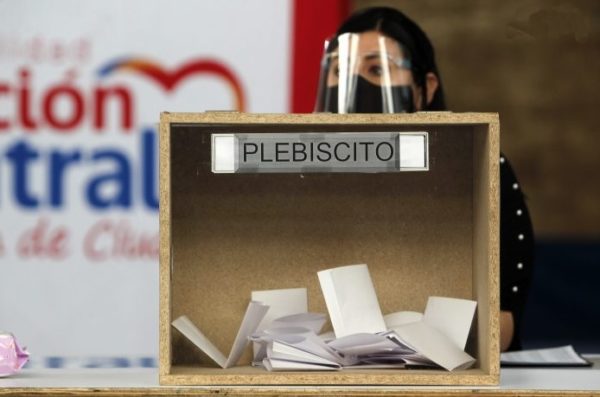Chile Decides its Future in its September 4th Referendum

By Ruben Martinez Dalmau* (Confidencial)
HAVANA TIMES – “Chile opens a path that other peoples of America and the world will be able to follow”. The sentence was uttered by Salvador Allende on September 4, 1970, the day he won the presidential election. Half a century later it could be repeated word for word on a similar date: September 4, 2022, when the “exit” referendum – as it is known in these southern lands – of the first Chilean democratic constitution will be held.
It has not been an easy process. No democratic process is. While covenant constitutions are negotiated by a few men in private offices or in luxury restaurants, democratic constitutions require consensus, dialogue, respect, and, especially, time.
In the Chilean case, the time has undoubtedly been an obstacle. It may seem that one year – which will finally be the term to be used by the Constitutional Convention – is a long time to draft a Constitution. However, it is certainly not the case when for the first time all social sectors of the country are summoned to listen first and approve afterward.
This is how the Chilean constituent has done it: it has dedicated an important part of its time to receiving proposals, listening to suggestions, and listening to the people. Now it is in the middle of the process of agreement and approval. Everything should be ready for the delivery of the draft constitution to the President of the Republic within three months.
To this, we should add three elements that are permeating the constituent process: on the one hand, the great plurality represented in the Convention, which is nothing more than the translation of the diversities of society such as the Chilean one. The constituent is parity, is diverse, includes ideologically opposed sectors, and is formed mostly by women and men who come from social movements and who have had little or no experience in political parties.
It should be noted that the constituent assembly incorporates native peoples through the so-called “reserved seats”. Never before in Chile had anything like this happened. Mapuches, Aymaras, Rapa Nui, Atacameños, Diaguitas… indigenous peoples who had never been heard are now participating in the drafting of a new Constitution. “They have always been there, but we didn’t see them,” comments one conventioneer in a low tone.
In fact, they have been there long before Chile’s modernization processes that excluded and made indigenous peoples invisible. Now they have the opportunity to argue from their seats; they take the floor in the commissions, raise their voices in the plenary, and put on the table concepts as advanced as the recognition of plurinationality or the consideration of nature as a subject of rights.
Secondly, the Chilean constituent procedure is, as a guarantee, enormously dilated in time and form. When the regulations for the functioning of the Convention were drafted, it was decided that there would not be a single loophole for discretion and that the issues could be debated over and over again. It is not enough with the agreements in committee, but everything is susceptible to be discussed several times in the different bodies of the constituent through the “indications” and the particular approvals.
To this must be added a not minor circumstance: the need for a reinforced quorum, the two-thirds of the plenary, which has the capacity to grant the last word in the approval. This was a great battle if a minority of the Convention was determined to boycott the constituent because they would always have the power to veto any approval by the majority.
But, on the other hand, the two-thirds have served to broaden the spectrum of agreements, to seek proposals among different ideologically distant groups and, in short, to draft a more consensual Constitution. I do not think I am wrong if I say that Rousseau would be very pleased with the procedure (maybe not so pleased with the result).
Thirdly, if anything has characterized the Chilean constituent process, besides being profoundly democratic, it has been its capacity to innovate. Not only in the very generation of debates taking place in the Convention’s headquarters: the old Congress building, between Morandé and Bandera streets, a block away from the always busy Plaza de Armas square in Santiago and a stone’s throw from La Moneda Palace. The process also innovates in terms of Chile’s constitutional history, which in its two centuries of existence had never experienced anything similar.
The new Constitution would mean a legal revolution necessary for the social transformation permanently claimed by the Chilean people, and which had in the “social outbreak” of October 2019, the day Santiago burned, its most visible expression.
In short, there is a date for the Chilean people to decide about the current generation and future generations: September 4, 2022. Voting will be mandatory, so a large turnout is expected at the polls. Chilean men and women will be able to decide whether to keep the 1980 Pinochet era constitution or move towards a supreme norm with deep democratic roots. Some inauspicious polls announce the victory of disapproval. Therefore, bets are accepted. I have already made mine and probably not be wrong.
——–
*Professor of Constitutional Law at the University of Valencia. Doctor of Law, political scientist and art historian. He specialized in democracy and constitutional processes with a focus on Latin America.
**Article originally published in Latin America21.





